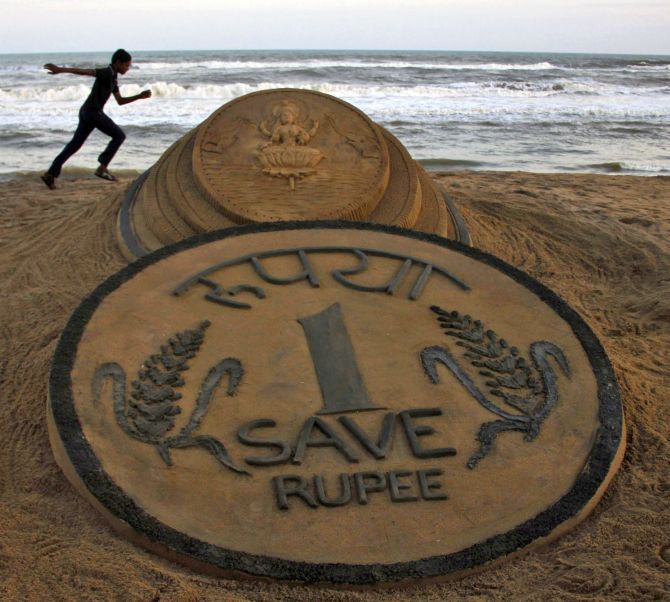India external debt continues to rise and 75 per cent of fiscal deficit target has already been breached. Even though investor sentiment around India continues to remain buoyant, macro-economic data released in September is worrying.
Even though investor sentiment around India continues to remain buoyant, macro-economic data released in September is worrying.
While upside risks to inflation remain, fiscal deficit has already hit 75 per cent of the full-year target.
The gap between expenditure and tax revenue receipts continues to widen, as tax revenues are nowhere near levels projected at the start of the financial year.
Industrial production has also started to cool.
In addition, HSBC India Purchasing Managers’ Index (PMI) has fallen to a nine-month low of 51 in September against 52.4 in August.
This indicates manufacturing activity has decelerated to the pre-election levels, which makes it imperative for the government to revive the investment activity.
External debt, too, continues to rise and at the end of June 2014, it stood at $450 billion (23.2 per cent of GDP).
The question to ask is whether the government has a game plan to combat risks - both internal and external.
The external risk does not look very ominous at the moment, thanks to a very manageable current account deficit (CAD).
Lower gold and oil imports are expected to keep India’s CAD at below two per cent levels even in FY15. Lower oil prices are likely to help the government this year, as its subsidy burden would be lower.
Bank of America Merrill Lynch’s oil strategist expects oil to stabilise at $90-100 a barrel (bbl) between 2016 and 2020, thanks to shale gas production increasing.
Bank of America Merrill Lynch believes this would ease pressures on CAD as $10 a bbl fall in oil price reduces CAD by $8 billion or 0.4 per cent of GDP.
“Net oil imports would also fall to 3.3 per cent of GDP from 5.5 per cent in FY13 if oil prices stabilise.”
Soumya Kanti Ghosh, chief economic adviser, State Bank of India, expects India’s oil import bill by $7.8 billion in FY15, as oil is expected to settle $98 a bbl.
Even if coal imports increase after the Supreme Court cancelling the coal blocks, the decline in oil imports would neutralise the impact.
The government is also expected to gain Rs 8,000-9,000 crore or Rs 800 billion via penalties on coal extracted so far, which will also improve the government’s fiscal position.
The Reserve Bank of India (RBI), too, is focused on recouping forex reserves.
At present, import cover has improved to 8.5 months from less than seven months, with RBI continuing to buy dollars from the market in addition to the $34-billion mobilised through the NRI deposit scheme.
Economists also expect foreign direct investment (FDI) to accelerate in times to come, as new sectors are opened.
The share of FDI has fallen to 1.2 per cent of GDP from a peak of 1.8 per cent, a trend that is expected to reverse.
And if the interest rates start coming off in FY16, equity flows should further accelerate.
However, the government needs to take measures to revive revenues rather than rely on divestment proceeds alone.











